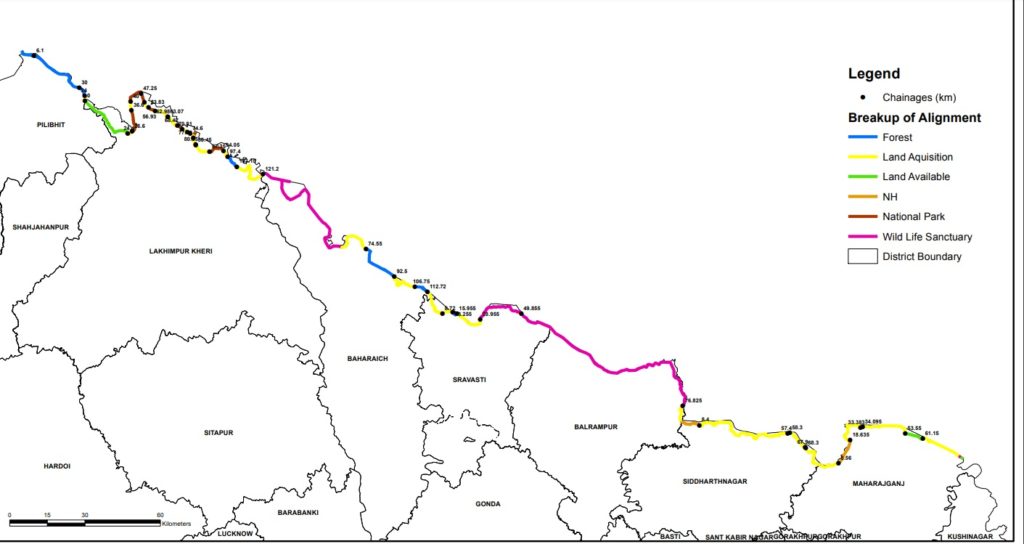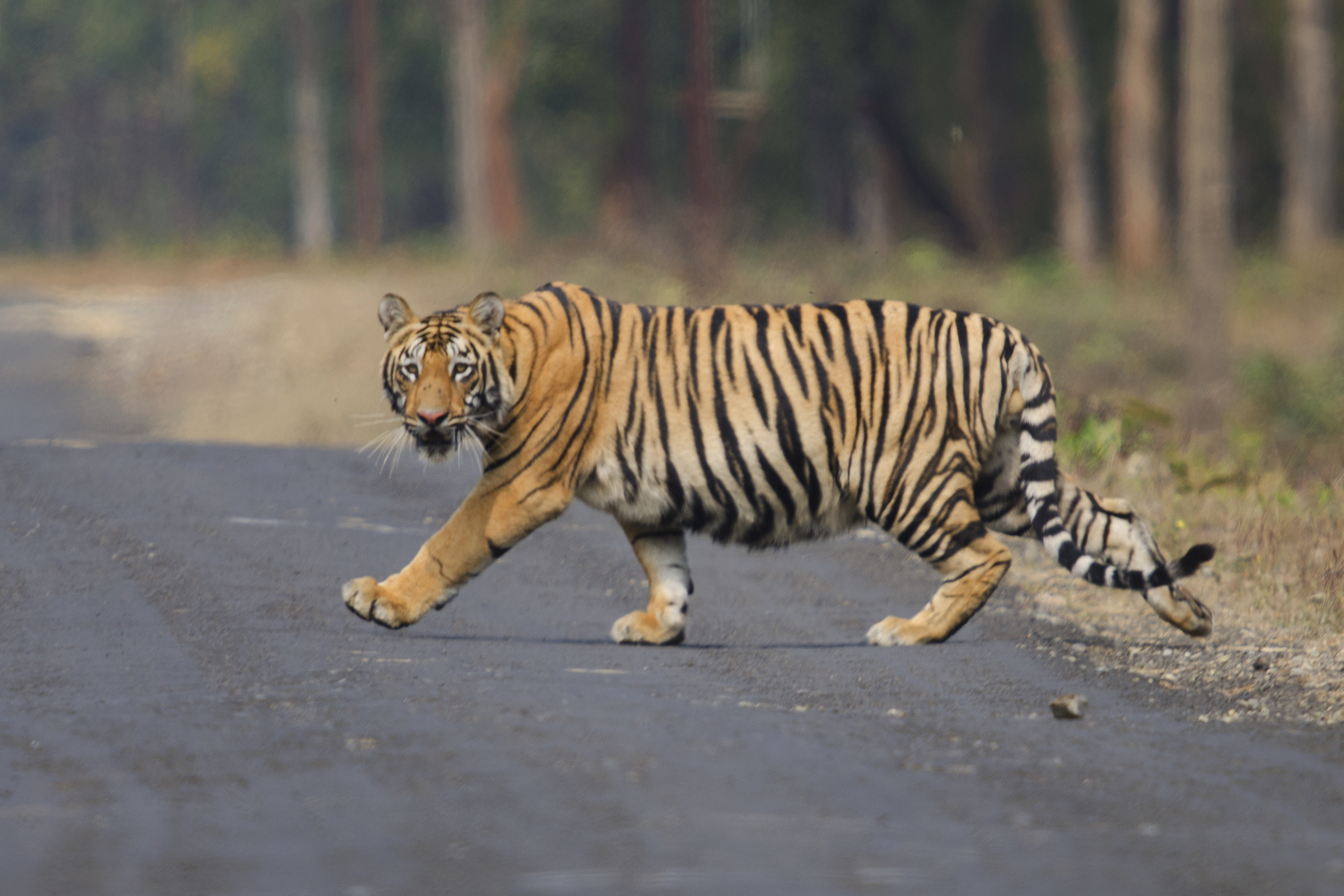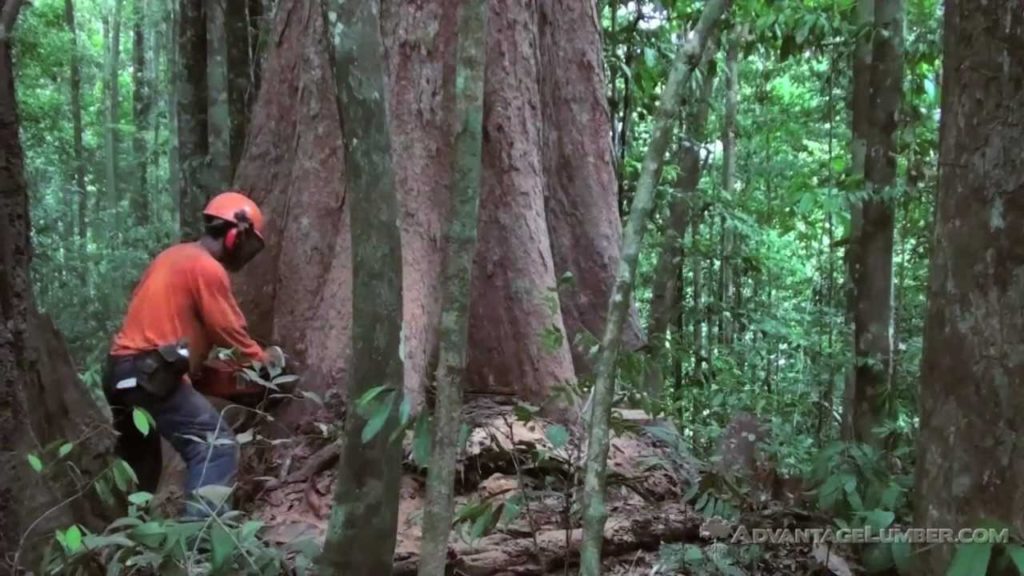One would assume that the recent floods of Kerala would be a good learning lesson for the nation to think twice before playing with nature. But yet again, the news of the state government of Uttar Pradesh planning to axe prime forest trees to build a road on the Indo-Nepal border, seems to show otherwise.
Read More: Adansonia Digitata, A Heritage Tree
According to a document accessed by IANS, the over 500-km-long Indo-Nepal Border Road project has been undertaken by the Public Works Department (PWD) of Uttar Pradesh. The road cuts through two tiger reserves and three wildlife sanctuaries spread across six districts along the Nepal border. 55,000 trees have been marked in the stretch to be chopped down to go ahead with the road project. Some of these include trees more than 200 years old.
Terai Ecosystem
The terai landscape is sandwiched between the Yamuna river in the west and the Bhagmati river in the east. It is a landscape on the foothills of the Himalayas and home to some of the most crucial tiger habitats of the country, including Corbett national park, Dudhwa national park and the Chitwan national park of Nepal. Tigers, Elephants and the Greater One Horned Rhino are three flagship species present in the region apart from other important animals and plants.
In Uttar Pradesh alone, a 2015 study by Omesh Bajpai and colleagues found a sum of 278 tree species belonging to 185 genera and 57 families from the Terai region. These include 7 Vulnerable and 2 Endangered species listed in the Red List of Threatened Species by International Union for Conservation of Nature (IUCN).
Now, however the future of all these plants is uncertain if the Uttar Pradesh government decides to move forward with the plan of axing the trees.

“The project is situated in the protected area,” the document states and asks the forest, PWD, SSB and tiger reserve officials in Pilibhit, Lakhimpur Kheri, Bahraich, Shravasti, Balrampur and Maharajganj districts to survey the area.
“Following the survey, the teams shall do required revision of project to reduce the impact that includes fragmentation of wildlife habitat and to deforestation as 55,000 trees had been marked, coming in way of the project, and of which many are over 200 years old,” said the minutes of the meeting held by the State Wildlife Board according to Indian Express.
The protected areas that will come under the radar are,
- Dudhwa Tiger Reserve
- Pilibhit Tiger Reserve
- Katarniaghat Wildlife Sanctuary
- Suhelva Wildlife Sanctuary
- Sohagi Barwa Sanctuary
All these are vital tiger lands and as per the UP government’s own admission on their tourism website – ‘these are among the few places that have retained their natural character.’
Dudhwa Tiger Reserve is well known for tigers, leopards, varieties of deer, antelopes, elephants, jackal and hyena. Rhinos too are found here. Katarniaghat comprises of a mosaic of Sal and Teak forests with lush green grasslands. The Gairwa river which flows in the sanctuary area is declared as a sanctuary for Mugger and Gharial. It is also home to rare turtles, and one of the few places in the world where Gangetic dolphins are still found.
Read More: In A Hotter Future, Thickness of The Tree Bark Will Decide Its Survival
The UP Tourism website notes the ecological importance of the Dudhwa-Pilibhit reserve belt saying,
“A study done by Wildlife Institute of India (WII) shows that Dudhwa-Pilibhit population has high conservation value as it represents the only tiger population with the ecological and behavioral adaptations of the tiger unique to the Tarai region. It is home to a habitat for over 127 animals, 326 bird species and 2,100 flowering plants. It is a mosaic of high sal forests, plantation and grasslands with several water bodies.”
On papers, 50,000 trees for a project worth crores might not seem like a big loss, however, chopping trees, some as old as 200 years, and all of them part of a thriving forest, could have larger implications than what meets the eyes.
As a general estimate based on the stats from the US Forestry Services,
50,000 trees can remove 26,500 tons of carbon dioxide
50,000 trees catch 6,95,00,000 gallons of rain water per year
50,000 trees can remove 97500 kg of other air pollutants
In the Terai region the network of forest provide a vital corridor for wildlife to travel from one place to the other. With the road coming up in almost all of the northern boundaries of so many forested areas, it will eventually increase human traffic, with animals shying away from using those areas. More road kills, fragmented habitats, deforestation, reduced secluded wildlife areas, increasing human-animal conflicts are the known evils that will follow in a few years.
Right now though, as much as the construction of a road connecting India and Nepal is of strategic importance, so is the safety of the 50,000 plus trees vital to the ecological and economical sustainability of the state. Hopefully, no decision will be finalised that adversely affects an important forested region of the country critical for the survival of the tigers unique to Terai region.
Read More: Saving An Endangered Tree Through Sustainable Use
Featured image courtesy WWF











2 thoughts on “Uttar Pradesh To Axe 50,000 Trees In Tiger Habitat To Build A Road”